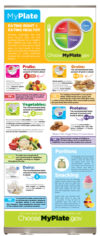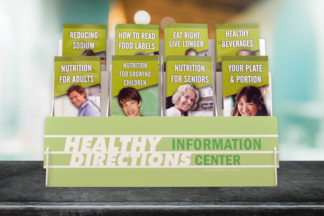Healthy Directions: Reducing Sodium Pamphlet
SKU: PB-PH24 Minimum Qty: 100- Describes what sodium is and where it’s found in the diet
- Notes that the body needs sodium to function properly
- Identifies the recommended daily allowance of sodium
- Discusses the dangers of too much sodium
- Explains why some people crave salt or salty foods
- Lists high sodium foods
- Offers strategies for limiting or lowering sodium intake
- Sold in packs of 50
| 100-499 | 500-999 | 1000-2499 | 2500-4999 | 5000+ |
| $0.55 | $0.48 | $0.43 | $0.39 | $0.35 |
$0.55
Description
Educate your community about healthy eating with this informative Reducing Sodium Pamphlet. Excessive sodium consumption can lead to a range of health issues, including high blood pressure, heart disease, stroke, and kidney problems. Readers will discover that reducing sodium intake is a vital step towards maintaining a healthy lifestyle.
An ideal handout for the doctors office, wellness centers, fitness centers, nutritionists and more. They’re also a great way to promote your health and nutrition education campaigns. On the back of the pamphlet is where you have the option of adding your custom message and/or logo. Customizing your brochure is a great way to increase healthy eating and nutrition awareness while also gaining exposure for your department or organization. The imprint area is large enough to display your logo and text for all to see, increasing your organizations visibility and further supporting your program.
To see a full PDF version of this pamphlet, click the Instant Preview tab above.
This brochure is also available in Spanish.
If you like this Healthy Directions: Reducing Sodium Pamphlet, then check out more of our Nutrition Materials.
For more pamphlet topics, click here.
To learn more about proper nutrition at ChooseMyPlate.gov.
Additional information
| Weight | 0.02 oz |
|---|---|
| Dimensions | 9.5 × 3.75 × .01 in |
| Minimum Order Quantity | 100 |
| Imprint Size | 2.75" x 4.5" |
| Size | 9.25" x 14.625" |
| Grade Level | All Ages |
| Type | |
| Free Sample | Yes |
| Sold in Multiples Of | 50 |








